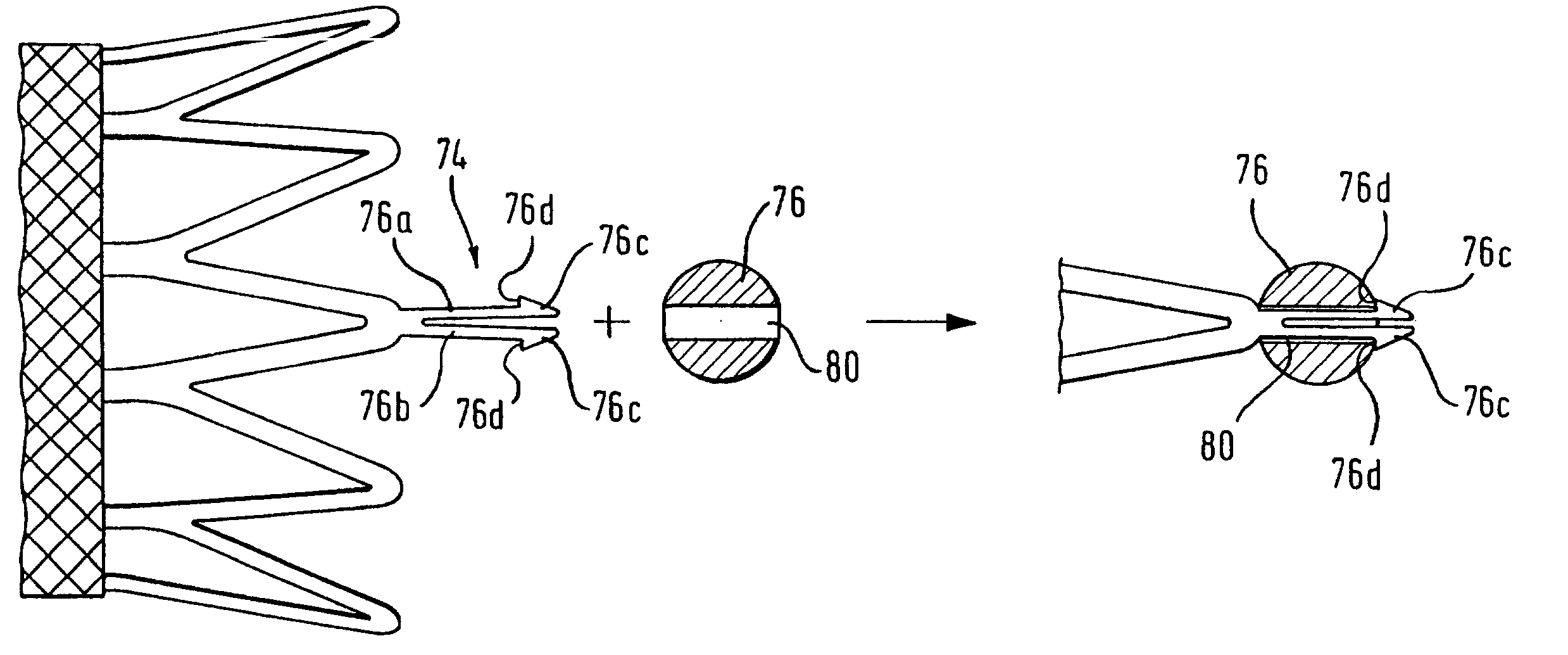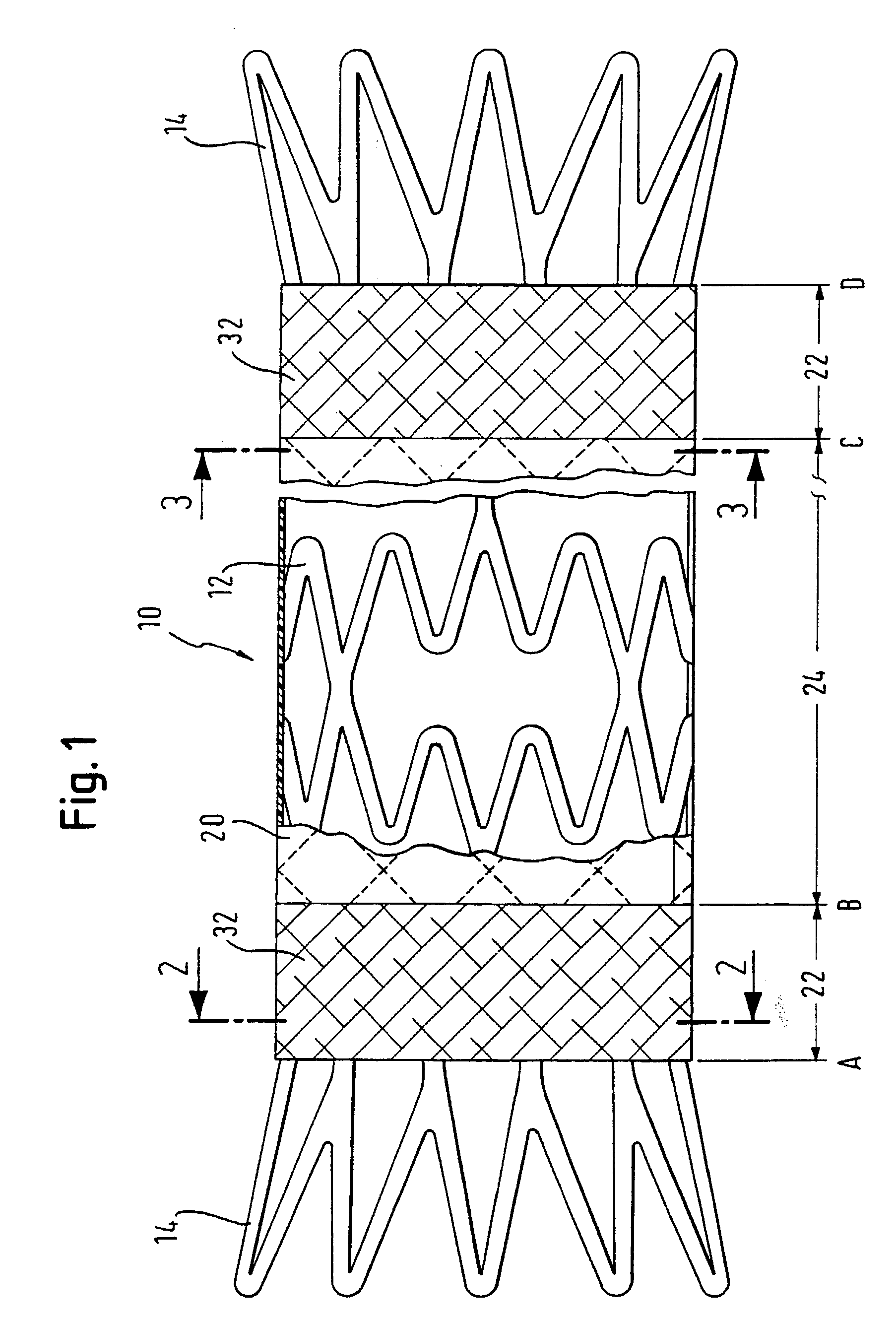Stent matrix
a technology of stents and matrixes, applied in the field of stent matrixes, can solve the problems of serious liver damage, restenosis of the vessel, and fatal complications
- Summary
- Abstract
- Description
- Claims
- Application Information
AI Technical Summary
Benefits of technology
Problems solved by technology
Method used
Image
Examples
Embodiment Construction
[0076] An esophageal stent graft was constructed from a Nitinol cylinder 0.3 mm thick. A laser controlled by a computer was used to cut a multiplicity of staggered cuts in the cylinder wall, parallel to the cylinder length, to create struts having a width of 0.167 mm. Cuts perpendicular to the length were also made in a mid-length portion of the tube length, for selective removal of scrap struts to enhance the flexibility of the mid-length section.
[0077] On a mandrel the tube is brought to its pre-set expanded configuration. The end portions of the expanded stent matrix cylinder were further expanded by the introduction of a tapered annulus between the stent matrix and the cylinder, one at each end of the stent. The stent matrix, on its mandrel, was then heated in an oven to "set" the configuration to be "remembered" by the shape memory alloy. Then, the scrap struts 32' were removed.
[0078] Following such heat-setting, the matrix was removed from the mandrel and a Nitinol bead, with ...
PUM
| Property | Measurement | Unit |
|---|---|---|
| width | aaaaa | aaaaa |
| width | aaaaa | aaaaa |
| diameter | aaaaa | aaaaa |
Abstract
Description
Claims
Application Information
 Login to View More
Login to View More - R&D
- Intellectual Property
- Life Sciences
- Materials
- Tech Scout
- Unparalleled Data Quality
- Higher Quality Content
- 60% Fewer Hallucinations
Browse by: Latest US Patents, China's latest patents, Technical Efficacy Thesaurus, Application Domain, Technology Topic, Popular Technical Reports.
© 2025 PatSnap. All rights reserved.Legal|Privacy policy|Modern Slavery Act Transparency Statement|Sitemap|About US| Contact US: help@patsnap.com



